Last updated on
Discover the truth about whether fleas can live on couches and how to effectively deal with these unwanted pests in your home.
Fleas are tiny, blood-sucking parasites that can cause a lot of discomfort to both humans and pets. They can easily infest your home and make their way onto your furniture, including your couch.
But the question is, can fleas really live on couches? If you’re dealing with a flea infestation or just curious about these pesky insects, then you’ve come to the right place. In this article, we’ll explore whether or not fleas can survive on couches and what you can do to prevent them from taking over your home.
So sit back (but maybe not on your couch just yet) and let’s get started!
Table of Contents
Flea Life Cycle
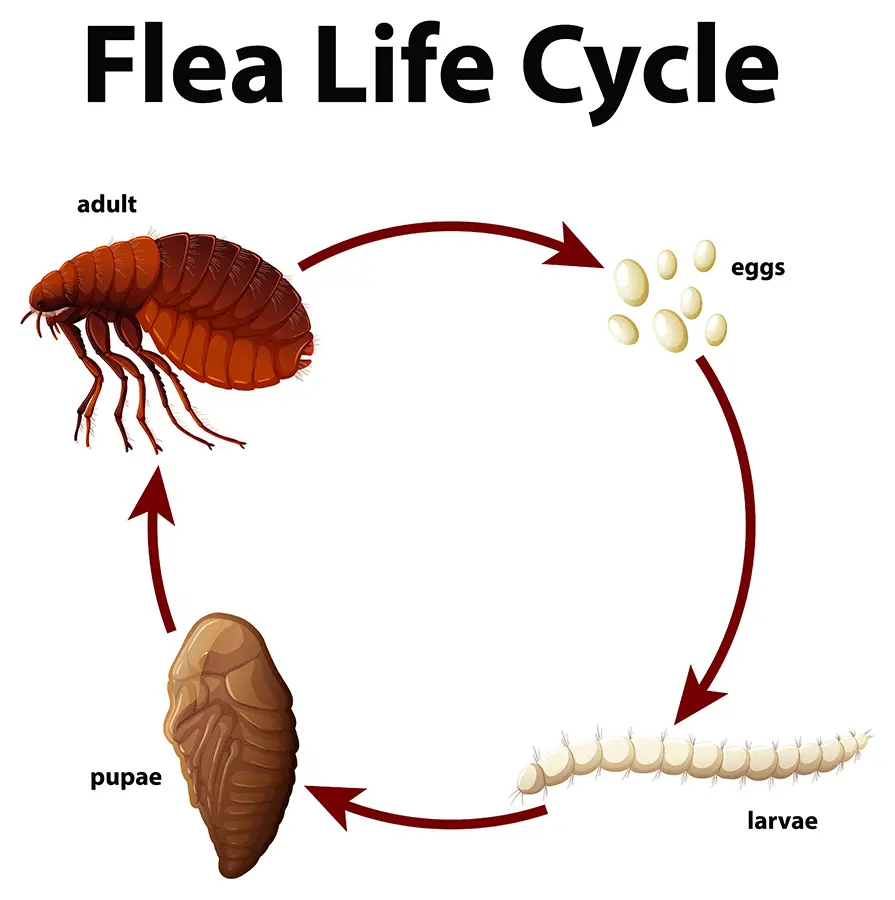
Understanding the flea life cycle is crucial in effectively dealing with a flea infestation. Fleas go through four stages of development: egg, larva, pupa, and adult.
The entire life cycle can take anywhere from two weeks to several months depending on environmental conditions such as temperature and humidity.
Flea eggs are laid by female fleas on their host or in areas where the host frequently rests or sleeps. These tiny white eggs are difficult to see with the naked eye and can easily fall off onto furniture or carpeting.
Once hatched, larvae emerge from the eggs and feed on organic matter such as skin cells, hair/fur fibers shed by pets/humans that accumulate within carpets/rugs/sofas etc., pet dander (dead skin flakes), dust mites feces etc. They avoid light sources which makes it easy for them to hide deep inside crevices of your couches making it hard for you to spot them.
After feeding for about 5-15 days they spin cocoons around themselves entering into pupal stage which lasts up-to 2 weeks before emerging into an adult flea ready to jump onto its next victim!
Common Flea Habitats
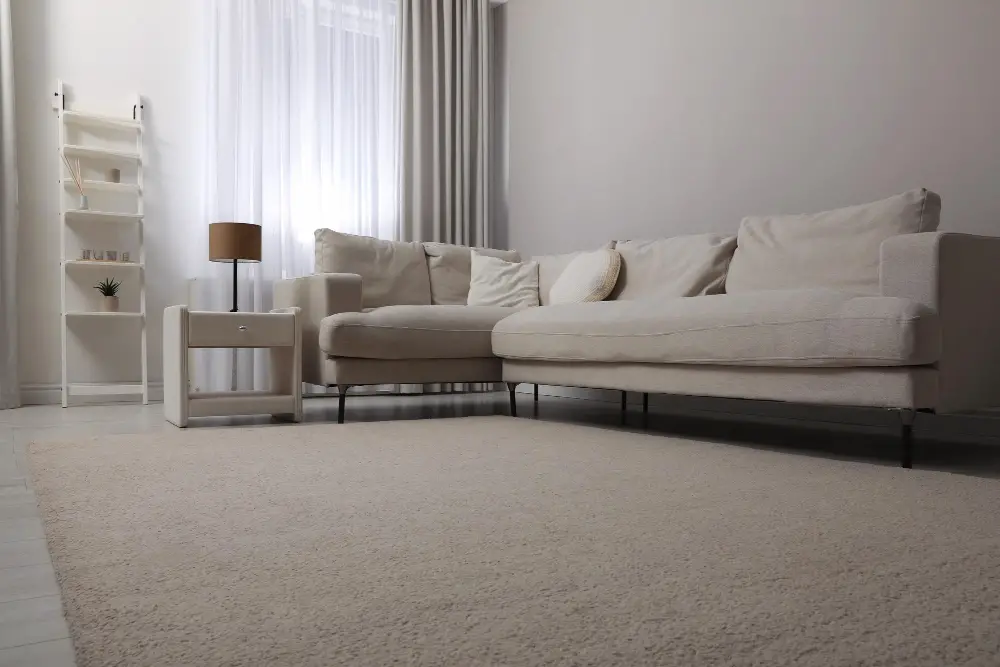
They can easily infest your home and make their way onto your furniture, including couches. But where do fleas typically live?
Common flea habitats include carpets, rugs, bedding, and upholstered furniture like sofas or armchairs. Fleas prefer dark areas with little disturbance where they can lay eggs without being disturbed by humans or pets.
If you have pets that spend time outdoors or come into contact with other animals that may be carrying fleas, it’s important to regularly check their fur for signs of these pests. Keeping your home clean and vacuuming frequently can help prevent flea infestations from taking hold.
Can Fleas Live On Couches?
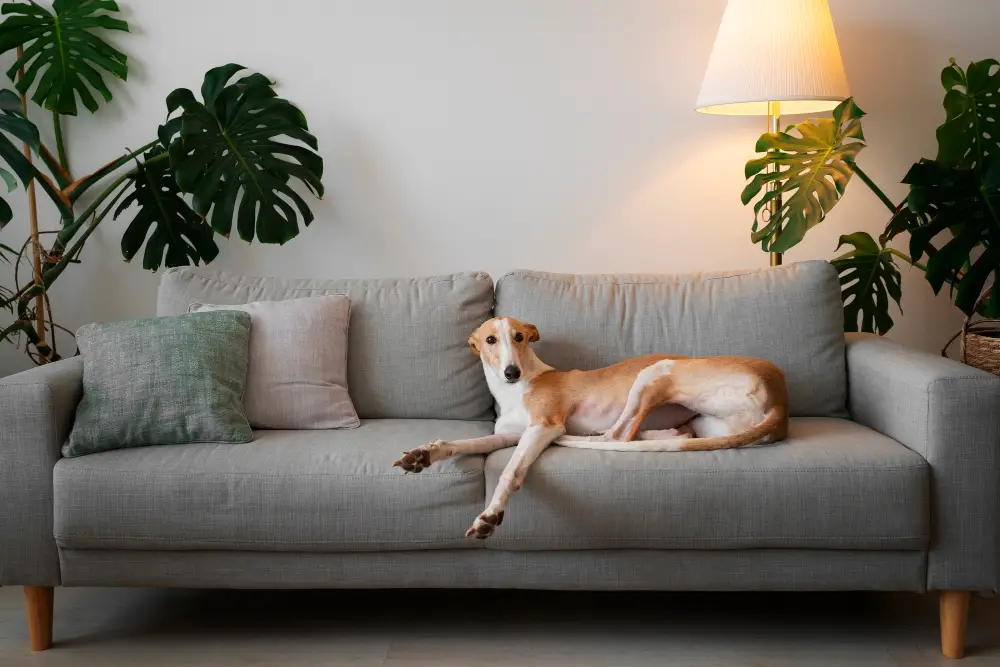
They thrive in warm and humid conditions, making homes a perfect breeding ground for them. When it comes to furniture, fleas can easily make their way onto your couches and other upholstered items.
While fleas prefer living on animals such as cats or dogs, they will not hesitate to jump onto humans if there is no other host available. Once they find a suitable environment like your couches or carpets, they lay eggs which hatch into larvae before developing into adult fleas.
So the answer is yes – Fleas can live on couches! If you have pets at home that frequently use the sofa or if you’ve recently had guests over who may have brought along some unwanted hitchhikers with them (fleas), then it’s highly likely that these pests could be lurking around your furniture right now.
But don’t worry; there are ways to deal with flea infestations effectively.
Fleas and Furniture
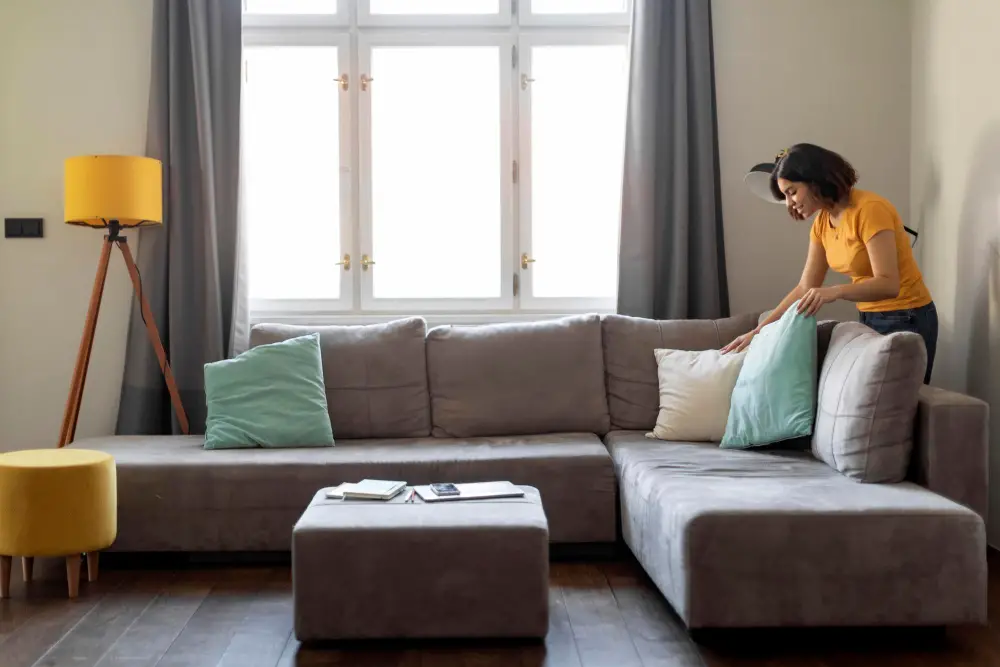
Fleas are attracted to warm, dark places where they can easily hide and reproduce. Couches provide the perfect environment for fleas to thrive as they offer plenty of hiding spots in the cushions and crevices.
If you have pets that frequently use your couch or if you’ve recently had a flea infestation in your home, then it’s important to check your furniture regularly for signs of these pesky insects. Look out for small black dots (flea feces), tiny white eggs or even live fleas themselves.
It’s also worth noting that while adult fleas may not survive on couches without access to blood meals from their hosts (pets or humans), flea larvae can still develop into adults within the fibers of upholstery materials such as fabric sofas.
Identifying Fleas On Couches
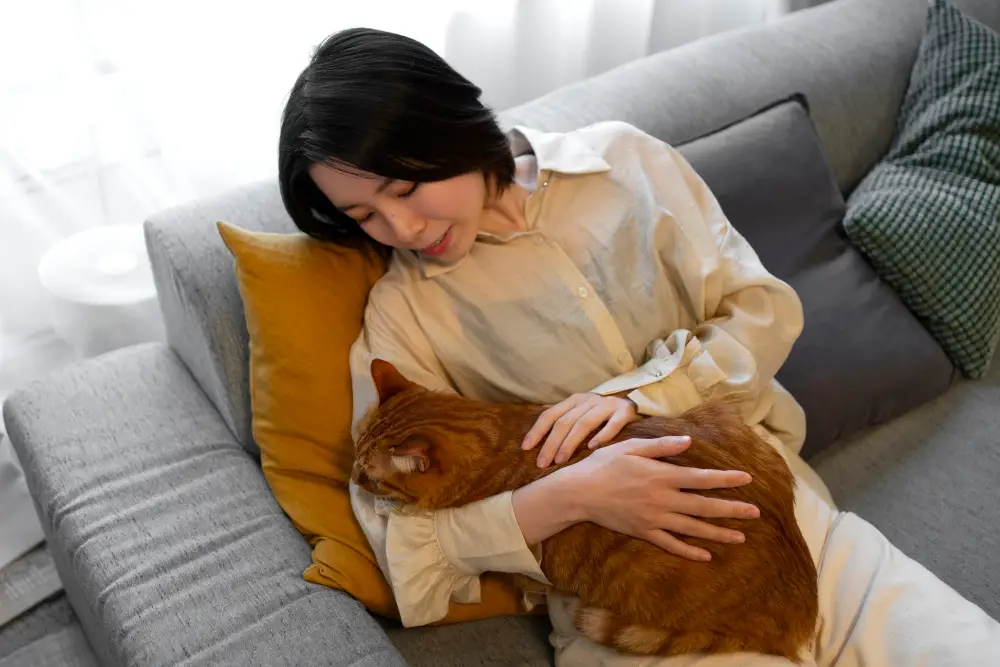
They are about the size of a pinhead and move quickly, making them hard to catch. However, there are some signs you can look for to identify fleas on your couch.
One way is by checking your pet’s fur for flea dirt – tiny black specks that resemble pepper flakes. If you find flea dirt in their fur or around the areas where they spend most of their time (like your couch), it’s likely that fleas have infested your home.
Another sign is if you notice any red bumps or bites on yourself or family members after sitting on the couch. Flea bites often appear as small red dots surrounded by a halo-like ring and cause itching and discomfort.
You may also see adult fleas jumping around on the surface of your furniture if there is a severe infestation present.
A Stable Environment for Fleas to Live

They need warmth, moisture, and food sources to reproduce and grow their population. Couches can provide an ideal habitat for fleas due to the presence of pet hair, skin cells, crumbs from snacks or meals consumed on the couch.
Moreover, if your home has high humidity levels or is not well-ventilated enough that it creates a warm atmosphere inside your house – this could be another factor contributing towards flea infestation in furniture.
Dark Safe Corners and Gaps for Eggs to Develop

These areas provide the perfect environment for flea eggs to develop into larvae and eventually adult fleas. Unfortunately, furniture can be a prime location for these pests to thrive.
If you suspect that your couch is infested with fleas, it’s important to thoroughly inspect all of its nooks and crannies. Look between cushions, under the frame or legs of the couch, along seams or piping on upholstery – anywhere that could potentially harbor flea eggs.
Once you’ve identified any potential problem areas on your furniture where fleas may be hiding out and laying their eggs undisturbed; it’s time to take action! Vacuuming regularly is one way of preventing an infestation from taking hold in these hard-to-reach places as well as washing removable covers frequently at high temperatures (60°C/140°F) which will kill off any existing parasites before they have a chance reproduce further.
Infrequent Deep Cleaning
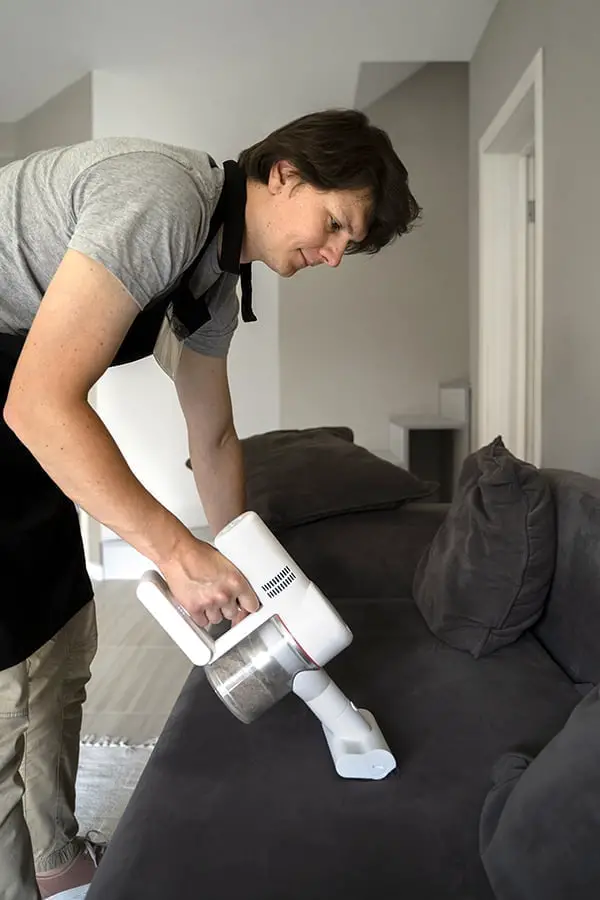
Couches are often overlooked when it comes to regular cleaning, and this can create a perfect environment for fleas to live and breed. Dust, dirt, pet hair, and other debris that accumulate on your couch provide an ideal hiding place for flea eggs and larvae.
If you have pets in your home or frequently entertain guests who may bring their pets along with them, then it’s important to clean your furniture regularly. Vacuuming your couch at least once a week will help remove any debris that could attract fleas.
In addition to vacuuming regularly, consider using upholstery cleaners specifically designed for removing pet stains and odors from furniture. These cleaners not only help eliminate any existing flea infestations but also prevent future ones by making the environment less hospitable for these pests.
How to Find Flea Eggs On Furniture?
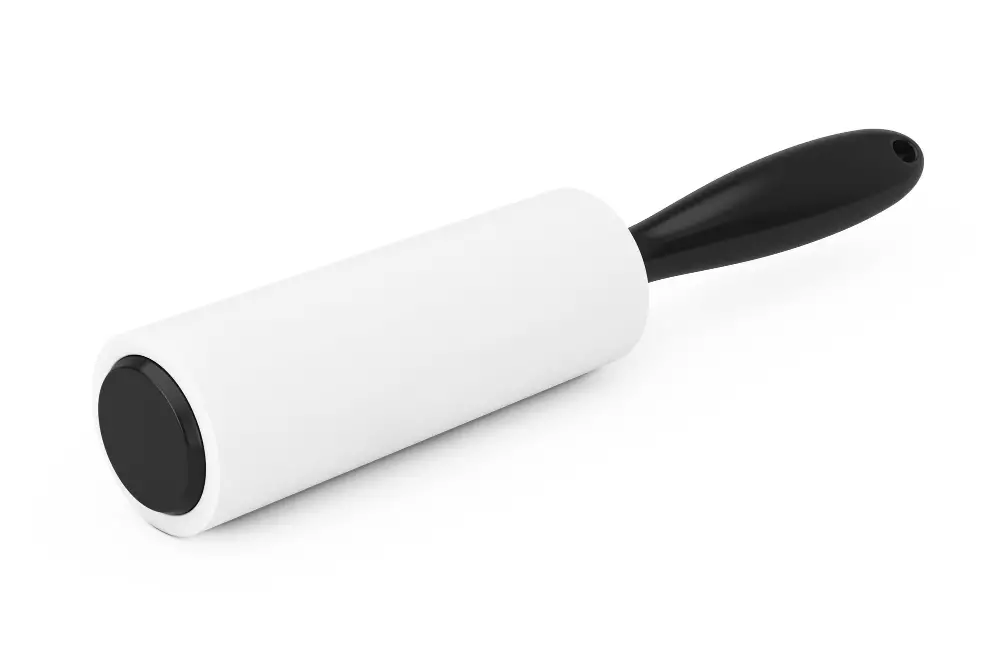
Flea eggs are tiny and difficult to spot with the naked eye, but they can be found in areas where fleas like to hide. To find flea eggs on furniture, start by thoroughly inspecting all crevices and seams of your couch using a flashlight.
Look for small white or off-white specks that resemble grains of salt or sand.
Another way to check for flea eggs is by using a sticky lint roller on your furniture’s surface. Roll it over the fabric several times and then examine the tape closely for any signs of fleas or their eggs.
Once you’ve identified any potential areas with flea activity, use a vacuum cleaner with strong suction power to remove as many adult fleas and larvae as possible from both sides of cushions (if removable) along seams & edges around buttons etc., paying special attention under them too! After vacuuming up all visible debris including pet hair/dander which may attract more pests later down-the-line – dispose bag contents outside immediately so no chance these critters escape back into home again!
Preventing Flea Infestations

One of the most effective ways to do this is by keeping your pets clean and well-groomed. Regularly bathing and brushing your pets can help remove any fleas or flea eggs that may be hiding in their fur.
Another important step in preventing flea infestations is vacuuming regularly, especially if you have carpeted floors or rugs. Vacuuming not only removes adult fleas but also helps get rid of their eggs and larvae before they have a chance to hatch.
It’s also essential to keep your home clean, particularly areas where pets spend most of their time, such as couches and beds. Wash pet bedding frequently using hot water as it kills all stages of flea life cycle including eggs.
If you suspect that there are already some fleas on furniture around the house, then it’s crucial that you take immediate action before things get out of hand. You can use natural remedies like diatomaceous earth powder which dehydrates insects’ exoskeletons causing death within 48 hours after contact with them.
Vacuuming and Flea Control
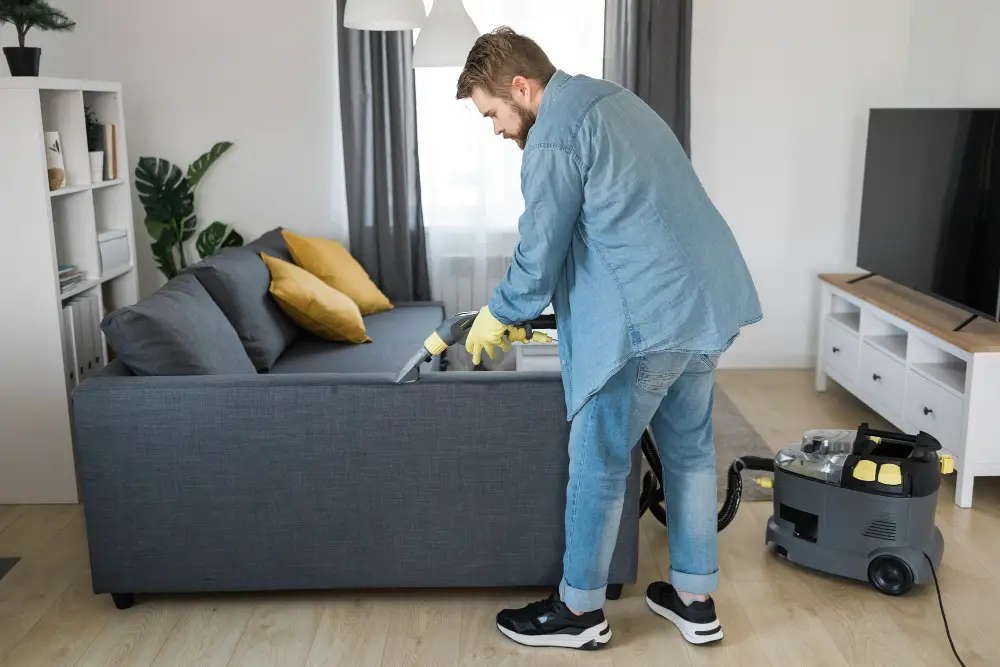
Fleas and their eggs can easily hide in carpets, rugs, and upholstery, making it difficult to get rid of them completely. However, vacuuming regularly can help remove fleas at all stages of their life cycle.
When vacuuming for flea control, make sure you use a high-quality vacuum cleaner with strong suction power. Start by thoroughly cleaning your floors and furniture using the crevice tool attachment to reach tight spaces where fleas may be hiding.
After you’ve finished vacuuming your home’s surfaces thoroughly dispose of the contents immediately into an outdoor trash bin or bag that seals tightly so that any live fleas or eggs do not escape back into your living space.
Treating Flea-Infested Furniture
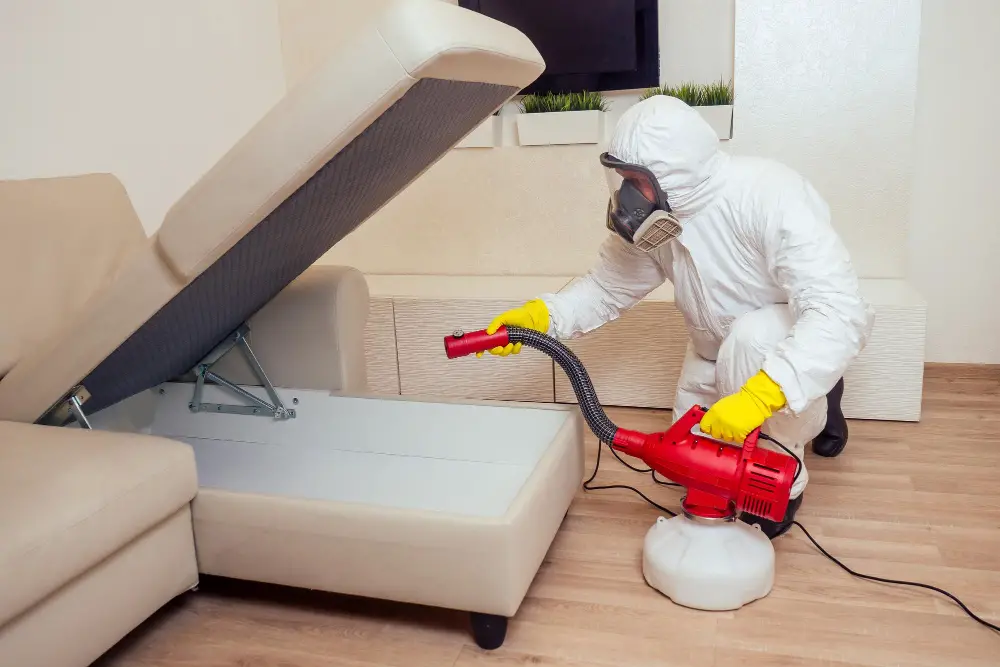
Flea infestations can quickly get out of control and spread throughout your home. The good news is that there are several effective ways to treat flea-infested furniture.
One option is to use a chemical treatment specifically designed for furniture. These treatments come in the form of sprays or powders and contain insecticides that kill fleas on contact.
Be sure to follow the instructions carefully and avoid using too much product, as this can be harmful to both humans and pets.
Another option is herbal remedies such as diatomaceous earth or essential oils like lavender oil which have been known for their flea-repelling properties.
Vacuuming regularly also helps remove adult fleas from the surface of your couches while washing cushion covers with hot water will help eliminate any eggs present in them.
It’s important not only treating but also preventing future infestations by keeping up with regular cleaning routines, vacuuming frequently especially under cushions where debris accumulates easily, washing pet bedding often if they share space with you indoors among other measures.
Herbal Remedies for Fleas

Some herbs are known to have flea-repelling properties and can help keep these pests at bay. One such herb is lavender, which has a strong scent that fleas dislike.
You can make your own lavender spray by steeping dried lavender in boiling water and then straining the liquid into a spray bottle.
Another effective herb is eucalyptus, which contains compounds that repel fleas and other insects. To use eucalyptus as a flea repellent for your couch, mix several drops of eucalyptus essential oil with water in a spray bottle and apply it to the affected areas.
Other herbs that may help repel fleas include peppermint, rosemary, thyme, and lemongrass. These herbs can be used alone or combined with others to create an all-natural flea repellent solution.
Chemical Treatments for Furniture
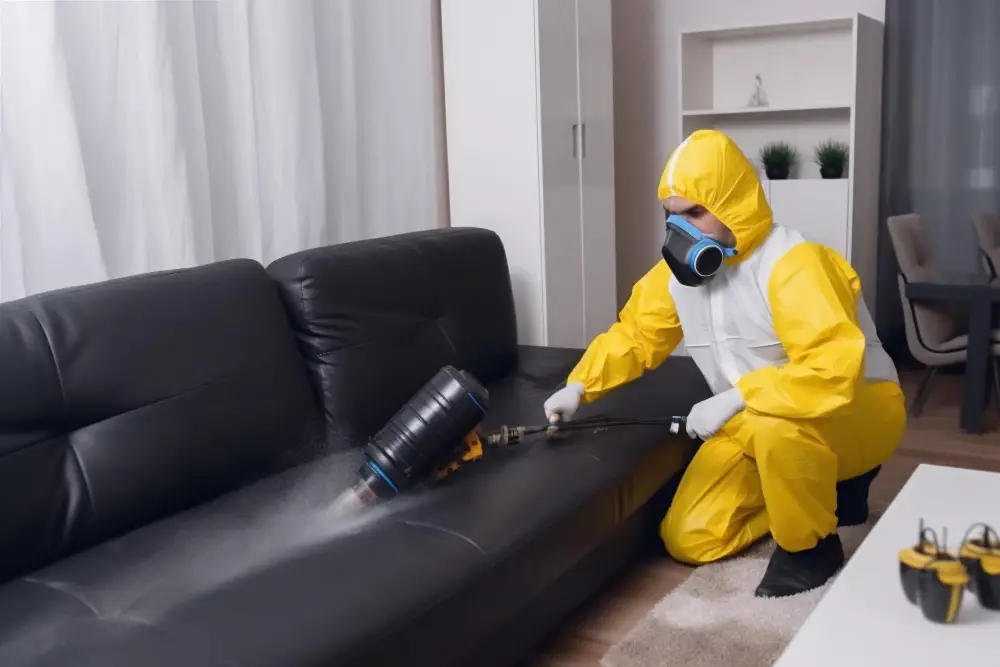
There are a variety of sprays and powders available that can be applied directly to your couch or other upholstered items. These products contain insecticides that kill adult fleas, as well as their eggs and larvae.
When using chemical treatments, it’s important to follow the instructions carefully and use them only in areas where they’re intended to be used. Some products may not be safe for use around children or pets, so make sure you read the label before applying anything.
It’s also worth noting that while chemical treatments can effectively eliminate flea infestations on furniture, they should not be relied upon as a long-term solution. Regular cleaning and vacuuming will help prevent future infestations from occurring.
If you do decide to use chemical treatments on your furniture, consider consulting with a pest control professional first.
Flea Repellent

These products work by creating an environment that is inhospitable to fleas, making it less likely for them to take up residence in your home.
There are many different types of flea repellents available on the market today, including sprays, powders, and even essential oils. Some popular natural options include lavender oil and cedarwood oil.
When choosing a flea repellent for your furniture, be sure to read the label carefully and follow all instructions for use. It’s also important to choose a product that is safe for both you and your pets.
Inside Flea Spray
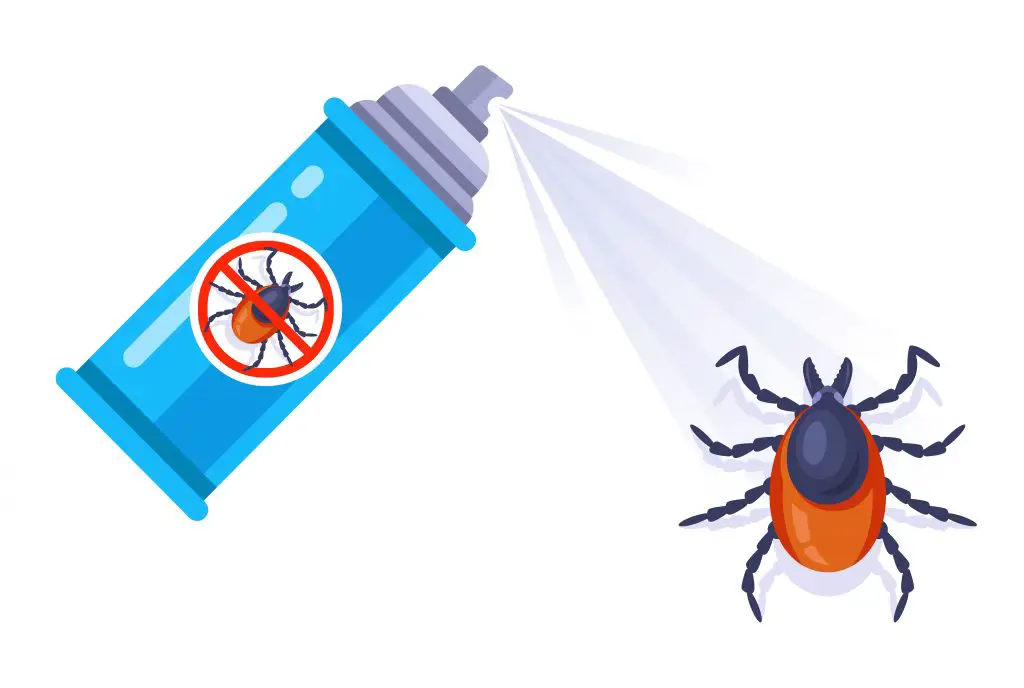
Inside flea sprays are designed to kill fleas and their eggs on contact, making them a popular choice for homeowners who want quick results.
When choosing an inside flea spray, it’s important to look for one that contains ingredients like pyrethrin or permethrin. These chemicals are toxic to fleas but safe for humans and pets when used as directed.
To use the spray, simply follow the instructions on the label and apply it directly onto your furniture (including couches), carpets, rugs, and any other areas where you suspect there may be fleas. Be sure to wear gloves while applying the product and keep children and pets away from treated areas until they have dried completely.
While inside flea sprays can be effective at killing adult fleas on contact, they may not always reach all of the hidden eggs or larvae in your home. For this reason alone we recommend combining multiple methods such as vacuuming regularly along with treating furniture with chemical treatments or herbal remedies if preferred by pet owners who prefer natural solutions over harsh chemicals.
Outside Flea Spray
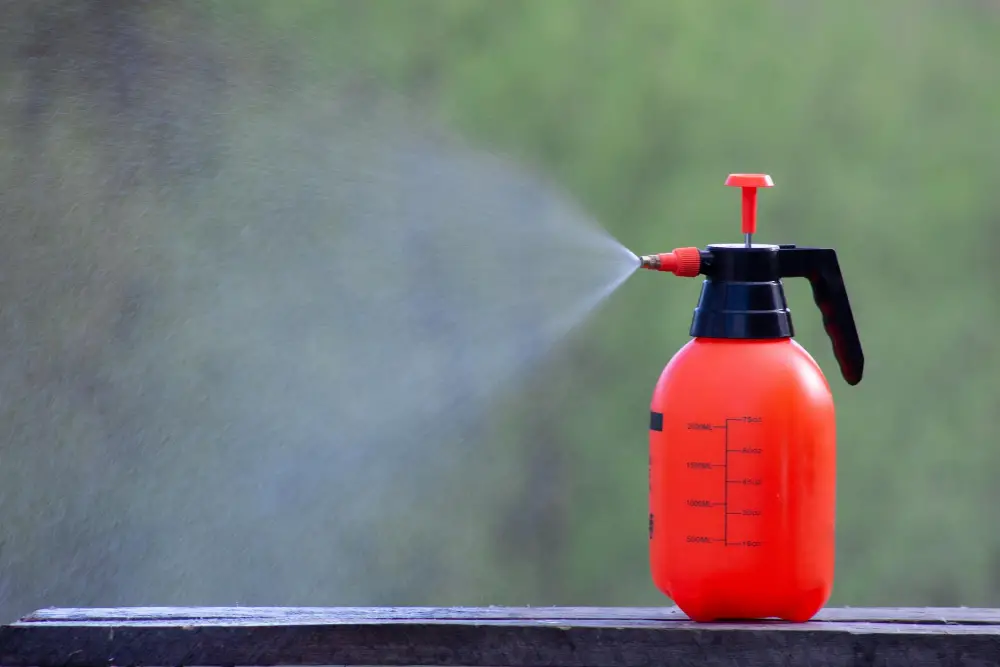
Fleas can easily make their way into your home through cracks and crevices, so treating the exterior of your house is just as important as treating the interior.
One effective way to control fleas outside is by using an outdoor flea spray. These sprays are designed specifically for use on lawns, gardens, and other outdoor areas where fleas may be present.
They contain insecticides that kill adult fleas and prevent them from reproducing.
When using an outdoor flea spray, it’s essential to follow all instructions carefully. Be sure to wear protective clothing such as gloves and long sleeves when applying the spray.
Keep children and pets away from treated areas until they have dried completely.
In addition to using an outdoor flea spray, there are other steps you can take to prevent fleas from entering your home in the first place. Keep grass trimmed short around your property since tall grass provides a perfect environment for fleas; remove any debris or clutter that could provide shelter for pests; seal up any cracks or gaps around doors or windows with caulk; keep pet bedding clean regularly washed at high temperatures (60°C/140°F) which kills both eggs & larvae.
Flea Spray for Pets
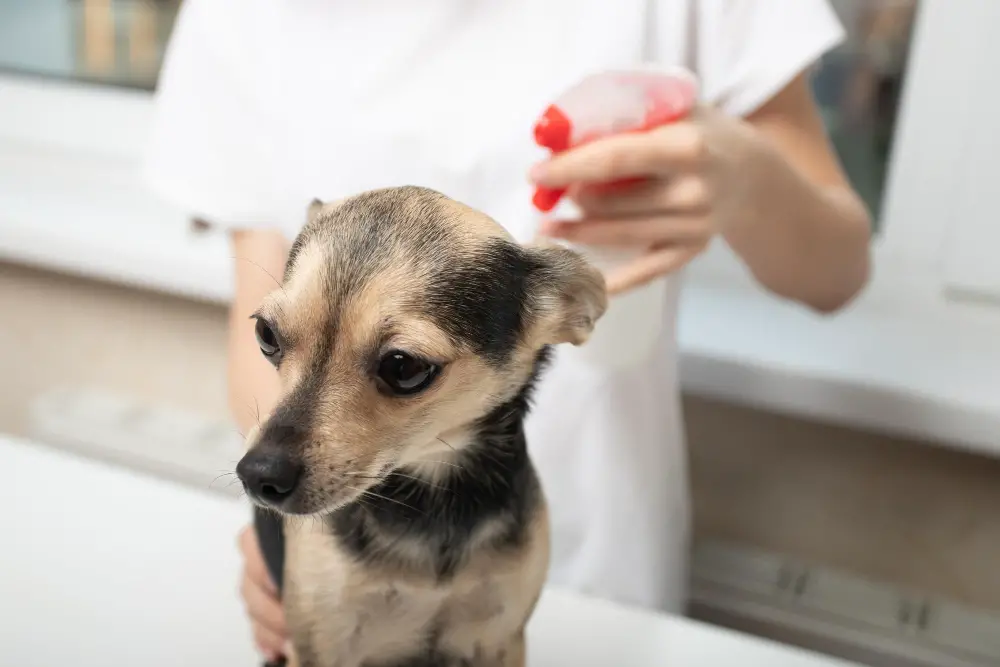
Flea spray is a popular option that can be used on both cats and dogs. However, not all flea sprays are created equal, so it’s important to choose one that is safe and effective.
When using flea spray on your pet, make sure to follow the instructions carefully. Some sprays may need to be applied directly onto the fur while others may require spraying onto a brush or cloth first before applying.
It’s also essential to use a product specifically designed for your pet species (cat or dog) since some ingredients in dog products can be toxic if ingested by cats.
In addition to treating your pets with flea spray regularly, you should also keep their bedding clean and vacuum frequently around areas where they spend time indoors. This will help prevent re-infestation of fleas in your home.
Maintaining a Flea-Free Home
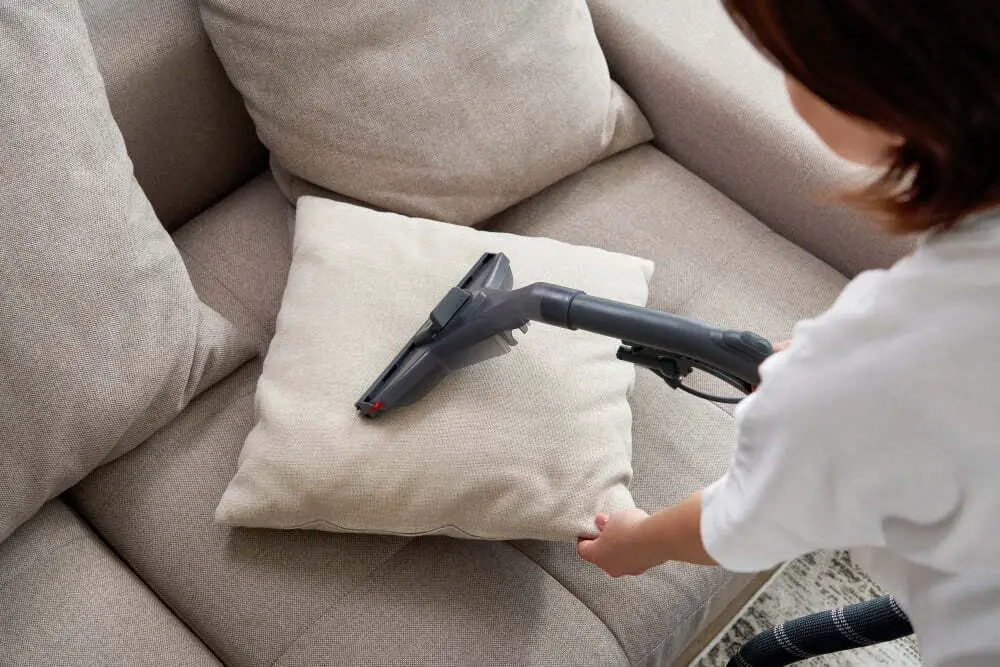
Regular cleaning and vacuuming can help eliminate fleas and their eggs from your furniture, carpets, and floors. Make sure to wash your pet’s bedding regularly in hot water as well.
Another important step is to keep your yard tidy by mowing the lawn frequently, removing any debris or clutter that may attract fleas or other pests. You can also use outdoor flea sprays around the perimeter of your property for added protection.
If you have pets, it’s essential to treat them with flea medication regularly as recommended by their veterinarian. This will not only protect them from fleas but also prevent them from bringing these pesky insects into your home.
In addition to these preventative measures, consider using natural remedies such as diatomaceous earth or essential oils like lavender or peppermint oil on furniture surfaces where pets frequent most often.
Fleas in Furniture – Overall
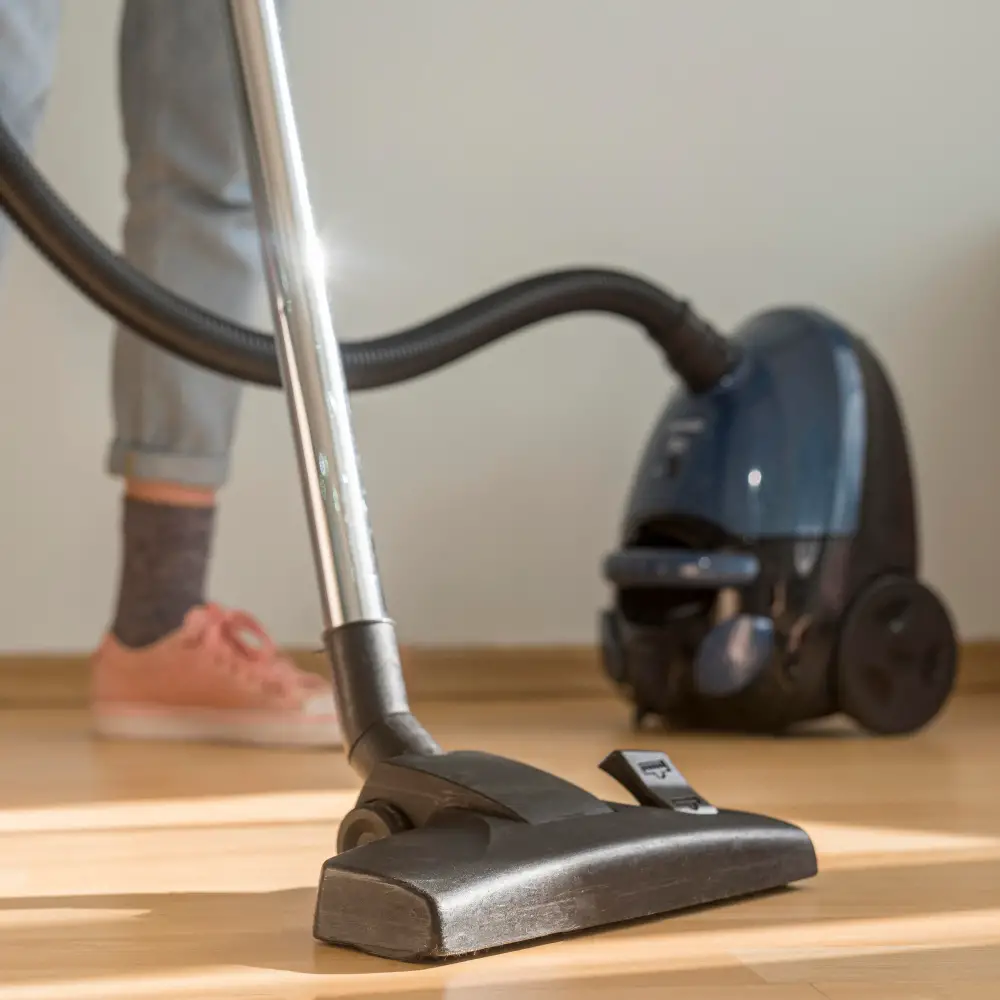
Fleas are known to infest carpets, bedding, and other soft furnishings in the home. However, they can also live on hard surfaces like wooden furniture or plastic chairs.
If you have pets that spend time indoors or if you’ve recently had an infestation of fleas in your home, it’s important to take steps to prevent them from taking over your furniture as well.
Regular cleaning and vacuuming of all areas where pets frequent is essential for flea control. This includes not only floors but also couches and other upholstered pieces of furniture where fleas may hide out.
In addition to regular cleaning practices such as washing bedding frequently at high temperatures (60°C), using flea repellent sprays on pet beds and keeping outdoor spaces clean will help reduce the risk of a flea infestation spreading throughout your home.
By following these simple tips for preventing fleas from living on couches or any other type of household item with fabric upholstery – you’ll be able to keep both yourself and your furry friends safe from these pesky parasites!
FAQ
How long do fleas live on a couch?
Without a host, fleas can typically live on a couch for one to two weeks.
How do you know if fleas are in your couch?
To determine if fleas are in your couch, look for flea dirt (which resembles coffee grounds) on upholstered furniture and pet resting areas, and confirm by placing it in water to see if it turns red, indicating flea dirt presence and requiring treatment.
What kills fleas on furniture?
A white vinegar solution with equal parts water and vinegar or sprinkling salt can kill fleas on furniture.
What are the signs of flea infestation on furniture?
Signs of flea infestation on furniture include flea dirt, eggs, adult fleas, and larvae commonly found in upholstery, carpets, and cushions.
How can you prevent fleas from infesting your couch?
To prevent fleas from infesting your couch, regularly vacuum the entire surface, launder all removable covers, and treat pets with a preventative flea medication.
What are effective remedies for removing fleas from your home’s furniture?
Effective remedies for removing fleas from home furniture include regular vacuuming, using natural sprays like lemon or vinegar solution, and treating upholstery with insecticides or flea foggers.




